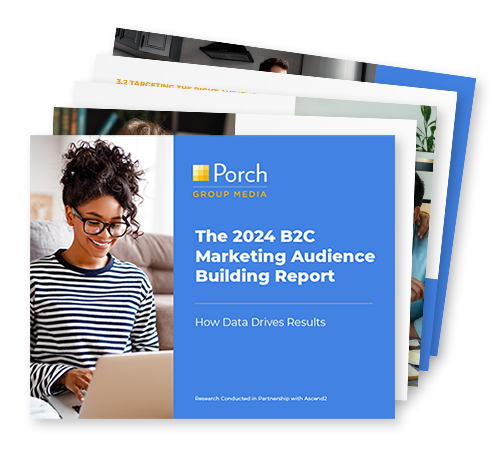Reaching your audience with a one-size-fits-all approach is simply not effective.
Today’s consumers demand personalized outreach and targeted communications. The key to providing this type of personalization lies in audience segmentation.
What is Audience Segmentation?
Audience segmentation involves dividing a broad target audience into smaller, more manageable groups of consumers based on specific criteria.
These segments may be based on characteristics such as similar needs, interests, or behaviors. Personalized messaging and strategies can then be implemented to engage with each audience segment.
Stats on the Power of Audience Segmentation
- 80% of audiences tend to do business with a brand that personalizes their experience with it. Personalization is achieved by sending tailored communications to similar audience segments.
- Nowadays, marketers create content for multiple consumer segments. The majority, around 3 out of 4, typically target three segments. However, only 4% of marketers use multiple types of data for segmentation, while 42% of them don’t segment at all.
- 80% of companies that use market segmentation report increased sales.
- Demographic segmentation is the most effective for B2C businesses. (Demand Metric)
Checklist for Creating Segmented Audiences
This checklist will guide you through the process of creating segmented audiences to enhance your marketing strategies and drive engagement.
Step 1: Gather and Integrate Customer Data
Successful segmentation strategies rely on robust data collection and integration. This should include a range of customer data including demographics, buying history, online behavior, and interactions with your brand across various channels.
Data Types to Include
Zero-Party Data
Zero-party data is obtained from a direct relationship with the customer and is collected with consent. Examples of zero-party data include communication preferences, product preferences, and customized account configurations. Zero-party data provides a high level of accuracy and reliability, especially when combined with first-party data insights.
First-Party Data
First-party data is information collected directly from your own customers. It is your proprietary data and includes data from interactions, transactions, and engagements that occur on your platforms. First-party data provides the highest level of accuracy and relevancy since it comes directly from your own audience.
Second-Party Data
Second-party data is obtained through an indirect customer relationship (compared to first-party data, which is a direct customer relationship). This type of data is information the brand didn’t collect but is often obtained by working with a trusted partner that shares audience insights in a mutually beneficial relationship. It may include activity on websites, apps and social media, survey responses, and more.
Third-Party Data
Third-party data is collected by external sources unrelated to your organization. It is aggregated data that is purchased or acquired from data providers or data aggregators. Third-party data is collected from various sources, such as public records, surveys, or online behavior tracking. It provides a wide range of audience insights but may be less accurate or specific to your particular business.
Step 2: Create Segments
What are your key goals for your segmentation strategies? For example, customer acquisition, customer retention, retargeting, or win-back campaigns.
Types of objectives and segmentation strategies may include:
Customer Acquisition
- Goal: Attract and convert new customers to grow your customer base.
- Approach: Identify and target segments that have high potential but are currently underrepresented among your customers. This could involve targeting demographics that show interest in similar products or engaging users who have visited your site but not made a purchase.
Customer Retention
- Goal: Keep existing customers engaged and loyal to your brand.
- Approach: Focus on segments with high lifetime value or those showing declining engagement. Tailored offers, loyalty programs, and personalized content can help maintain their interest and satisfaction.
Retargeting
- Goal: Re-engage customers who have shown interest in your products or services but did not complete a purchase.
- Approach: Use behavioral data such as website visits, abandoned carts, or previously viewed products to craft personalized messages and offers that draw these potential customers back.
Win-Back Campaigns
- Objective: Reclaim former customers who have either shifted to competitors or ceased purchases.
- Approach: Analyze the reasons for their departure and address these in your outreach. Special incentives, product updates, or changes in service that align with their previous concerns can be effective in winning them back.
Cross-Selling and Upselling
- Objective: Increase the revenue generated from existing customers by selling additional or premium products.
- Approach: Identify customers who could be interested in complementary or higher-tier products based on their purchase history and preferences. Tailored recommendations can stimulate additional purchases.
Step 3: Personalize Content
Develop customized marketing messages, content, and promotions that are specifically designed for each customer segment. This involves not only addressing the unique needs, preferences, and behavioral traits of each group but also incorporating specific personal data to deepen the connection and relevance of each interaction.
- Demographics: Use personal information such as the customer’s first name, location, and language to tailor communications.
- Special Occasions: Capitalize on birthdays, anniversaries, or other significant dates by sending personalized offers or messages that celebrate these milestones to enhance customer loyalty.
- Behavioral Data: Analyze user behavior, such as website navigation patterns, purchase history, and product preferences. Use this data to tailor product recommendations, promotional offers, and even content timing to match the customer’s habits and preferences.
- Psychographic Data: Incorporate interests, lifestyles, and values into your marketing strategy. For instance, for customers identified as environmentally conscious, highlight eco-friendly products or sustainability initiatives.
- Engagement Levels: Track how customers interact with previous marketing emails or content. Segment users based on their engagement level—such as active, lapsing, or inactive—and tailor communications to re-engage or reward them.
Step 4: Choose the Right Communication Channels
Finally, identify the most effective communication channels for engaging each segment. While one segment may respond best to email marketing, another might be more active on social media platforms or more responsive to email messages.
Adjusting your communication strategy to match the preferences of each segment ensures that your marketing efforts are as effective as possible.





